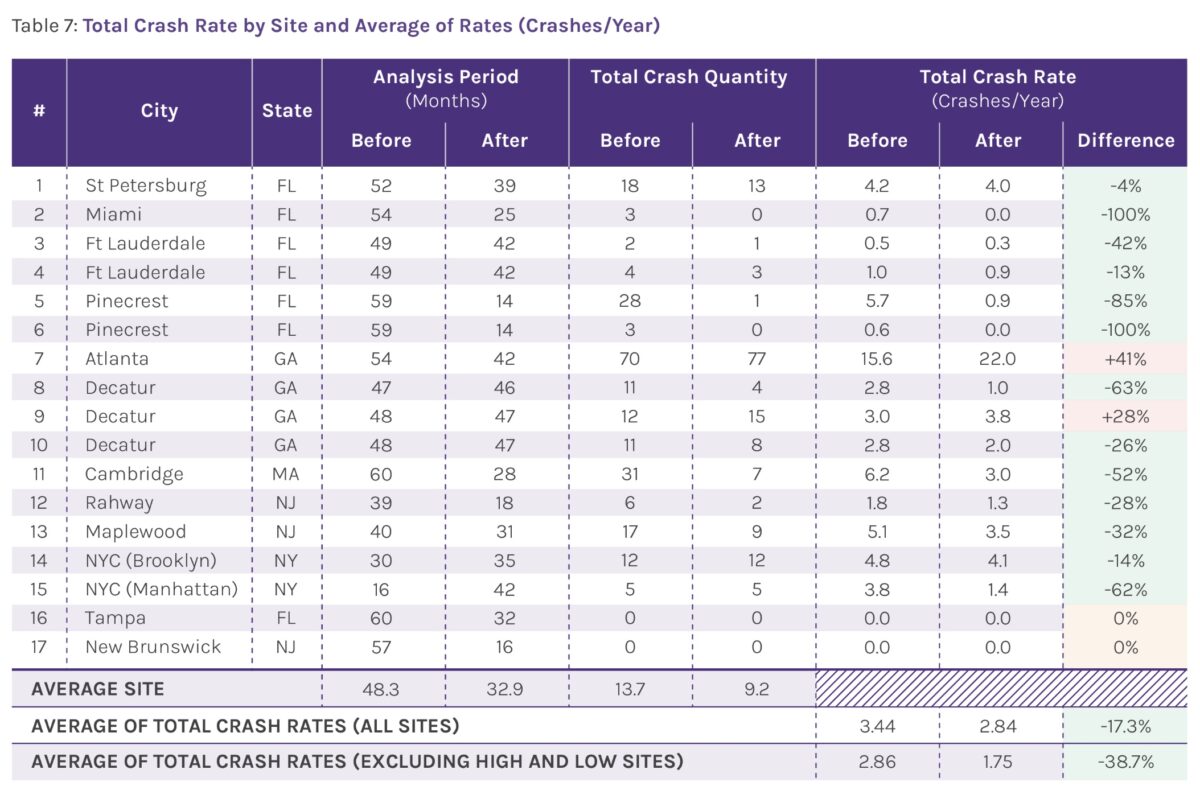
(Photo: Jonathan Maus/BikePortland)
“Asphalt art had a strong positive correlation with improved safety benefits.”
— Bloomberg Philanthropies
Portlanders have been creating large-scale murals on streets and intersections since the mid 1990s. Today we have nearly 100 street paintings citywide and the trend is only getting stronger as paint finds its way directly into traffic-calming projects and leaders push for more creatively decorated plazas and carfree streets.
For years, the official stance from the Portland Bureau of Transportation has been that intersection paintings have no traffic safety impacts and are simply a tool to build community and bring people together around a shared neighborhood identity.
But new research funded by Bloomberg Philanthropies through their Asphalt Art Initiative might warrant a shift in the city’s narrative.
The Bloomberg report (PDF) focused on 17 asphalt art sites across America. Researchers compared before-and-after data of crash rates and did video analysis of street user behaviors. “Asphalt art had a strong positive correlation with improved safety benefits across aggregated and most individual study sites,” researchers wrote in the study. “Road user behavior clearly improved across the observed study sites in the after analysis periods.”
Specifically, they noted a 50% decrease in the rate of crashes involving pedestrians or other vulnerable road users, a 37% decrease in the rate of crashes leading to injuries, and a 17% decrease in the total crash rate. The user behavior assessment yielded similar results; a 25% decrease in pedestrian crossings involving a conflict with drivers, a 27% increase in frequency of drivers immediately yielding to pedestrians with the right of way, and a 38% decrease in pedestrians crossing against the walk signal.
Advertisement

Keep in mind the Bloomberg study included a variety of art installations. Some of the sites had paint only, some had paint combined with traffic calming and other infrastructure elements, some were intersections, others were crosswalks. Even so, the results warrant attention.
Compare these findings with PBOT messaging about street paintings. On their website, they write: “The biggest misperception about street paintings is that they affect traffic, either making it better or worse. We have no data to support any changes to traffic volume or safety as a result of street paintings.” And in a 2019 interview with Portland-based Fat Pencil Studio, they said, “We do not see any changes in speed, number of motor vehicles, compliance with traffic control like stop signs and crosswalks, nor crash activity. They have a neutral impact on traffic, but are a great way to build community.”
Asked for a response to the study, PBOT spokesman Dylan Rivera said the city would like to know more about whether Bloomberg’s results were a function of the paint alone, or if other related variables (like new traffic calming measures) played a role. “This study doesn’t distinguish between whether a safety improvement resulted from vertical elements like plastic wands, or traffic signal changes, or the paint itself,” Rivera said. (Of the 17 sites studied, nine of them had only paint and no other changes to the roadway design. And all of those had significant reductions in crashes and yielding behaviors.)
Rivera was not ready to fully adopt the idea that paint — by itself — has a safety benefit. “We do, however, think that geometric changes like curb extensions and intersection realignments impact safety whether they are made of concrete or paint-and-post applications,” he said.
The study authors share Rivera’s cautious optimism. They say this initial study warrants even more research to find out which element of these projects contribute most to safety improvements.
The elephant in the room with this issue is that Federal Highway Administration’s Manual on Uniform Traffic Control Devices (MUTCD) — the guide that traffic engineers follow out of legal and professional obligation — has been wishy-washy when it comes to street paintings. It’s not technically prohibited, but memos that address the issue have also not given cities a full green light to get out the brushes. That’s one of Bloomberg’s goals with this study. They hope it helps convince the FHWA to, “remove this ambiguity with another such interpretation memo citing the results of this study and clarifying that the use of color in crosswalks and the use of artwork on roadways is in fact permitted under the 2009 MUTCD.”
— Check out the Asphalt Art Safety Study here.

